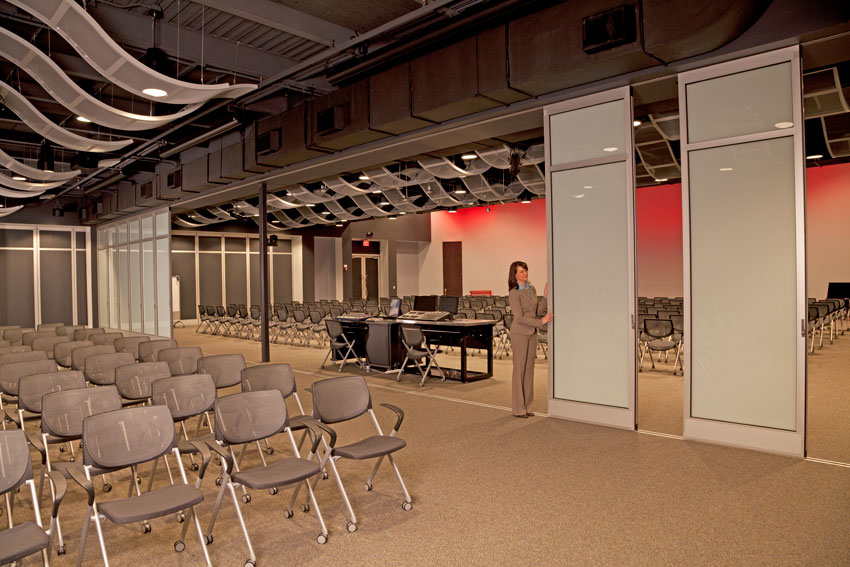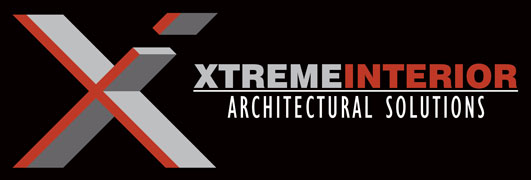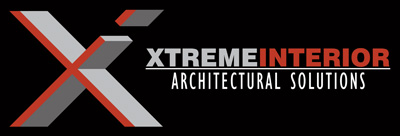This CE Center article is no longer eligible for receiving credits.
Most people would agree that the first impression of a building comes from the exterior, but usually it’s the interior that generates a lasting impression. The interior is typically where clients and building occupants spend their time, interact with others, and carry out the activities of living, working, or playing. It’s no wonder then that this is where the design community finds a lot of opportunity to be creative, innovative, and unique. Fueling innovation is research being conducted on everything from human impacts of openness and natural light to perceptions about color and texture. Functional concerns also come into play, centered on the ability of a space to accommodate the needs of the people occupying it and the long-term ability of it to perform as intended. All of these aspects of creativity, functionality, and human needs intersect during the process of designing building interiors. Recognizing this, manufacturers of interior building products have been equally creative and responsive to the needs of designers by continuing to offer new and updated products, materials, and systems. Sometimes these are totally new products, while other times they are known and proven, just used in different and creative ways. In this course, we will delve into some of the products that are contributing to the latest interior design trends and helping design professionals move things forward.
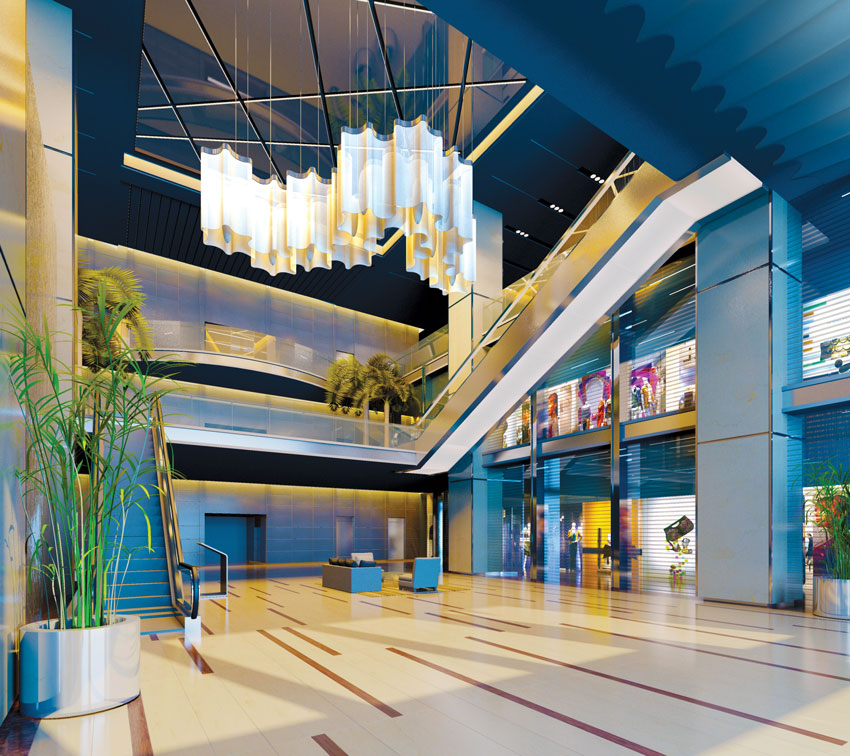
Image courtesy of TAMLYN
Interior spaces in buildings are influenced by trends, materials, products, user preferences, and designer creativity—all of which promote innovation for interior design.
Innovative Wall Surfacing
Among the first surfaces that people experience in an interior space are the walls. They can be as simple and understated as white painted gypsum board or as elaborate and detailed as a designer’s imagination allows. All the while, they need to be easy to maintain and clean over the life of the building. With this in mind, many interior designs lean toward a simpler, more elegant wall surface solution with a clean, modern look and minimalistic details. Others select certain walls to feature with added detailing and trim to create a total appearance. Achieving any of these looks typically involves panels of some sort, such as gypsum board or other rigid materials with reveals or trim around the edges. That trim can be metal, wood, or other suitable choices to frame and accentuate a wall surface while protecting and aligning the panels.
One increasingly popular method of dealing with finish panels on wall surfaces is to use manufactured trim pieces made of aluminum. Products are readily available that are designed to be used with 5/8-inch-thick drywall or in conjunction with wrapped surface finishes, such as fabric or vinyl wall coverings. They are available in a variety of traditional, contemporary, and modern looks to create subdued or emphatic three-dimensional appearances. Since aluminum is highly durable, recyclable, lightweight, and noncombustible, it is a popular and logical choice for many building products, including interior trim of this type. Its strength helps provide some wall protection when used for corners and other areas that need some reinforcement. In that sense, it is a good example of a well-known material that can be used in innovative ways for interior designs.
In addition to standard products, custom profiles can be made to not only accommodate particular styles but also to hold other materials, such as glass, tile, or panels in a variety of thicknesses. Some manufacturers offer customized service and designs to architects and will readily meet to discuss design ideas and solutions. This service is not only centered on aesthetic issues but also on technical and performance issues of the trim related to its ability to hold up over time. The results can be profiles that are project specific or part of a mass production selection, such as aluminum extrusions of simple reveals and transitions to improve and enhance drywall surfaces. It can also include new shapes and forms that introduce the appearance of fine crafted metal integrated with drywall and panelized surfaces. Part of the beauty of aluminum extrusions is that they are very economical, meaning that they can more easily be incorporated into projects.
The unique design possibilities of this trim approach can create clean lines, shadow lines, or reveals that make a wall surface stand out as part of an interior space. It is also readily possible to create rounded corners, smooth transitions, or other shapes that enhance the overall design of the space in ways that wouldn’t be possible with traditional wall surfacing techniques. Economical aluminum trims are available in a primed finish for painting in the field or prefinished in common anodized aluminum colors, such as clear, champagne, bronze, and black. Wayne Braun, an interior designer with the firm PDR in Houston, has worked with manufacturers on designs of this type and created some very successful interiors in the process. He notes, “The manufacturer has introduced the appearance of fine metal craft integrated with drywall and panelized surfaces at a fraction of the cost of having custom metalwork designed, detailed, and fabricated for a project.” Needless to say, it is easy to see why his firm is able to continue to innovate with this wall surface and trim approach.
Designers like Braun have also found that to be fully successful, a design needs to address all of the conditions and details of wall surfaces. That includes the wall base, corners, top edge, and any openings or variations. In that regard, they find that working with a single manufacturer who can provide all of the needed trim pieces in a coordinated system is a big key to success. Maybe just as importantly, being able to work out the details using a consistent and proven system means that innovation is possible without taking on undue design risk.
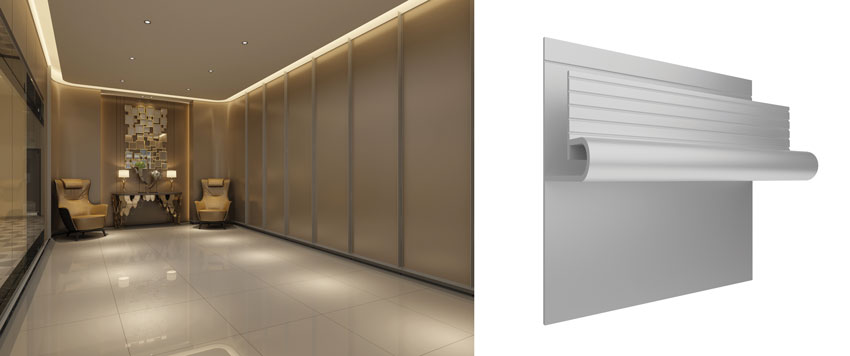
Images courtesy of TAMLYN
Aluminum trim systems can create simple but stunning profiles for innovative wall surfaces. As shown here, they can provide base or corner protection or produce a simplified installation for vertical or horizontal drywall designs.
Most people would agree that the first impression of a building comes from the exterior, but usually it’s the interior that generates a lasting impression. The interior is typically where clients and building occupants spend their time, interact with others, and carry out the activities of living, working, or playing. It’s no wonder then that this is where the design community finds a lot of opportunity to be creative, innovative, and unique. Fueling innovation is research being conducted on everything from human impacts of openness and natural light to perceptions about color and texture. Functional concerns also come into play, centered on the ability of a space to accommodate the needs of the people occupying it and the long-term ability of it to perform as intended. All of these aspects of creativity, functionality, and human needs intersect during the process of designing building interiors. Recognizing this, manufacturers of interior building products have been equally creative and responsive to the needs of designers by continuing to offer new and updated products, materials, and systems. Sometimes these are totally new products, while other times they are known and proven, just used in different and creative ways. In this course, we will delve into some of the products that are contributing to the latest interior design trends and helping design professionals move things forward.

Image courtesy of TAMLYN
Interior spaces in buildings are influenced by trends, materials, products, user preferences, and designer creativity—all of which promote innovation for interior design.
Innovative Wall Surfacing
Among the first surfaces that people experience in an interior space are the walls. They can be as simple and understated as white painted gypsum board or as elaborate and detailed as a designer’s imagination allows. All the while, they need to be easy to maintain and clean over the life of the building. With this in mind, many interior designs lean toward a simpler, more elegant wall surface solution with a clean, modern look and minimalistic details. Others select certain walls to feature with added detailing and trim to create a total appearance. Achieving any of these looks typically involves panels of some sort, such as gypsum board or other rigid materials with reveals or trim around the edges. That trim can be metal, wood, or other suitable choices to frame and accentuate a wall surface while protecting and aligning the panels.
One increasingly popular method of dealing with finish panels on wall surfaces is to use manufactured trim pieces made of aluminum. Products are readily available that are designed to be used with 5/8-inch-thick drywall or in conjunction with wrapped surface finishes, such as fabric or vinyl wall coverings. They are available in a variety of traditional, contemporary, and modern looks to create subdued or emphatic three-dimensional appearances. Since aluminum is highly durable, recyclable, lightweight, and noncombustible, it is a popular and logical choice for many building products, including interior trim of this type. Its strength helps provide some wall protection when used for corners and other areas that need some reinforcement. In that sense, it is a good example of a well-known material that can be used in innovative ways for interior designs.
In addition to standard products, custom profiles can be made to not only accommodate particular styles but also to hold other materials, such as glass, tile, or panels in a variety of thicknesses. Some manufacturers offer customized service and designs to architects and will readily meet to discuss design ideas and solutions. This service is not only centered on aesthetic issues but also on technical and performance issues of the trim related to its ability to hold up over time. The results can be profiles that are project specific or part of a mass production selection, such as aluminum extrusions of simple reveals and transitions to improve and enhance drywall surfaces. It can also include new shapes and forms that introduce the appearance of fine crafted metal integrated with drywall and panelized surfaces. Part of the beauty of aluminum extrusions is that they are very economical, meaning that they can more easily be incorporated into projects.
The unique design possibilities of this trim approach can create clean lines, shadow lines, or reveals that make a wall surface stand out as part of an interior space. It is also readily possible to create rounded corners, smooth transitions, or other shapes that enhance the overall design of the space in ways that wouldn’t be possible with traditional wall surfacing techniques. Economical aluminum trims are available in a primed finish for painting in the field or prefinished in common anodized aluminum colors, such as clear, champagne, bronze, and black. Wayne Braun, an interior designer with the firm PDR in Houston, has worked with manufacturers on designs of this type and created some very successful interiors in the process. He notes, “The manufacturer has introduced the appearance of fine metal craft integrated with drywall and panelized surfaces at a fraction of the cost of having custom metalwork designed, detailed, and fabricated for a project.” Needless to say, it is easy to see why his firm is able to continue to innovate with this wall surface and trim approach.
Designers like Braun have also found that to be fully successful, a design needs to address all of the conditions and details of wall surfaces. That includes the wall base, corners, top edge, and any openings or variations. In that regard, they find that working with a single manufacturer who can provide all of the needed trim pieces in a coordinated system is a big key to success. Maybe just as importantly, being able to work out the details using a consistent and proven system means that innovation is possible without taking on undue design risk.

Images courtesy of TAMLYN
Aluminum trim systems can create simple but stunning profiles for innovative wall surfaces. As shown here, they can provide base or corner protection or produce a simplified installation for vertical or horizontal drywall designs.
Design Treatments for Walls and Elevator Cabs
Beyond wall panels of different types, the surface finish of walls is always a significant design item. Interior wall protection is a given in facilities with high traffic and the risk of wall damage, but a balance between appearance and durability needs to be struck to create surface conditions that are both appealing and easy to maintain. In that regard, manufacturers have come a long way by developing rigid, protective sheet products in vibrant solid colors, various patterned products, and realistic woodgrains.
There is also often the need or desire to include graphics in the form of photos, logos, information, teaching, or wayfinding on the surface of walls. Protecting such graphics as well as the wall can be a challenge in high-use areas, but there is an innovative solution for that now that is worth considering. The use of digitally printed wall panels has emerged as a truly viable wall surface option for many buildings. Printing the image on the back side of a durable, clear rigid sheet means that the image is protected by the clear covering. If the exposed surface becomes dirty or is bumped, the plastic takes the hit, not the graphic image.
Printed wall protection transforms what designers most likely consider a necessary evil into beautiful artwork. Because printed wall protection is all custom made, designers have total design flexibility to incorporate any and all images they choose as part of the overall design vision. It also allows for the incorporation of large-scale imagery or smaller graphics—from entire walls in a school gymnasium, to an atrium in a hotel lobby, to smaller art elements for a corporate board or conference room. In health care, the inclusion of biophilic imagery, which mimics nature, has been shown to play a role in patient comfort and calming. In education, school mascots become wall-size giants to build school spirit and pride. In hospitality spaces, the imagery can be tied to the locale such as local landmarks or attuned to the hotel’s brand and/or décor.
Such graphic imagery doesn’t need to be confined just to walls. Among the most used spaces in a multistory building are the elevator cabs. The walls of these cabs have been discovered by many building owners as a means to communicate with visitors, tenants, and others about some aspect of the building use. In essence, the elevator cab can become a daily ambassador of the message or branding of the building. However, these cabs are subject to deterioration and damage precisely because of their heavy use. This damage gives the impression that the owner does not care about upkeep of the building, which in turn may create a negative perception about the entire organization. Maintaining the brand image of a facility is usually quite important for people trying to retain clients and give visitors a pleasant experience. Therefore, the elevator cabs need to be updated regularly either to overcome a worn and unsightly appearance or to simply upgrade the look to be consistent with the organization or other parts of the building. Further, leaving an old, damaged, dark, and dingy elevator cab out of a larger building renovation project can very well make the appearance look worse and leave an otherwise beautiful upgrade project with a serious black eye.
The most cost-effective and innovative way to carry out such an elevator cab upgrade is to use preconfigured elevator cab renovation systems from a manufacturer that has a specialty line of products to address these needs. This system can include any or all of the following elements.
- New panels: The elevator panels that line the walls are what primarily make up the appearance of the cab. These panels also typically take quite a beating—from hospital beds to luggage carts, tenant move ins and outs, construction equipment, vandalism and whatever else may come its way. Fortunately, the panels can be made of durable and rugged materials that can be made to look like any range of materials from wood to metal to stone or custom choices. Sometimes materials are improperly selected because of first appearances or first costs. The downside to that is that the chosen material may look fine for the first month or so but then deteriorates quickly from heavy use. That means the building owner needs to spend more money to replace it with a more-durable product that should have been installed in the first place.
- New ceilings and lighting: Elevator ceilings come in many different styles and can be selected to suit an overall design concept. Lighting in elevator cabs can be chosen from among common lamping options, such as halogen, incandescent, fluorescent, or energy efficient LED. Keep in mind that people tend to be more comfortable in a well-lit interior, so combining a brighter ceiling with increased lighting output can help people feel more relaxed inside, not to mention create a newer and cleaner look. The energy efficiency of increased elevator cab lighting may not seem significant at first, but consider that, in most cases, these lights stay lit 24 hours a day seven days a week meaning they are running for 8,760 hours a year. That can add up to a lot of energy and the utility bills that go along with it. Further, selecting energy-efficient LED lighting means the lamps have a much longer service life, notably reducing maintenance costs for replacements.
- New handrails: Handrails in elevators may not get much attention unless ADA or accessibility code requirements are being looked at. The handrails provide stability for users (i.e., something to grasp) while the elevator stops and starts. This is particularly true for elderly, disabled, or injured people who need help to reduce the risk of a fall. Beyond the people aspect of handrails, they provide a means for a complete look to the cab and can act as a wall guard too. By providing a stand-off surface from the wall of the cab, they can reduce the chance of equipment or furniture striking the wall panels. As part of a total system for elevator cabs, handrails come in different shapes, sizes, and finishes.
Paying attention to both the appearance and durability of wall surfaces and elevator cabs can clearly pay off in terms of creating successful, innovative interiors.

Photos courtesy of Inpro
A $20-million expansion more than doubled the size of the Cancer Center at All Saints Hospital in Racine, Wisconsin. Eppstein Uhen Architects incorporated large-scale digital wall cladding into three lounges/waiting areas of the new facility, which featured tranquil nature scenes.

A $3.5-million renovation project to modernize multiple elevators across the campus of the University of North Carolina – Charlotte included multiple woodland patterns with custom graphic logos applied in selected locations plus new ceilings, lighting, and stainless steel handrails.
Operable Glass Interior Walls
While many people think of walls as stationary to isolate spaces from one another, there are plenty of occasions when having the ability to open up and connect two spaces is desirable. This is particularly true in a number of commercial, office, retail, hospitality, restaurant, and educational settings where different sized groups of people can create different space needs. At the same time, having visual access for either light or functional connectivity when walls are closed can be desirable or necessary in certain design situations. As such, the approach of creating open use of spaces with flexible square footage has become increasingly popular and is a true innovation in interior design and planning. The means to do this found in operable glass interior walls that can fold or slide into either open or closed positions at will.
When looking at incorporating an operable glass interior wall into a project, there are four prime design considerations. These include:
- Flexibility: Operable glass walls provide ultimate flexibility for either separating spaces or combining two or more spaces. Selecting a product that is truly easy to use is important so that it will actually be used as intended and not become a liability rather than an asset.
- Light: When the operable wall is open, all of the available light can pour into the space that would otherwise be closed off by a wall. When the operable wall is closed, it can either be opaque or translucent to block some or all of the light if desired, or it can be made with clear glass and minimal edge frames to still allow full light into the enclosed space. The use of glass also helps with providing natural daylight and views into the enclosed space.
- Sound control: When an operable wall is closed, it suggests that the people inside of the space need or desire some sound separation from the adjacent spaces. Sound transfer can be tested and measured on all operable glass doors to determine sound transmission class (STC) ratings and outdoor/indoor transmission class (OITC) ratings. Independent tests conducted on operable glass walls have shown results of an STC of 36 and OITC of 30, which are favorable for many indoor environments and better than some fixed glass partitions.
- Privacy: Focused meetings or private conversation often need the privacy of good sound control and sometimes visual control. Operable glass walls can be specified to achieve such desired levels and maintain the needed privacy when the doors are closed.
Overall, with no floor track required, operable glass walls allow for uninterrupted transitions between interior spaces. When the wall is closed, the beauty of an all glass aesthetic is realized with the added benefits of acoustical sound privacy and the potential for views and shared light.

Photos courtesy of NanaWall Systems
Operable glass walls provide the flexibility of opening spaces up to each other (as shown on the left) or separating spaces (as shown on the right) to create privacy and sound isolation without sacrificing light and visual connectivity.
Ornamental Metalwork
A somewhat common but well-established interior product is found in ornamental metals. Sometimes thought of for high-end HVAC grille covers for air vents and supply or return registers, it is also being used innovatively for aesthetically exciting solutions to some interior design challenges. For example, perforated or artistically fabricated grilles can be used for nonstructural infill panels for featured locations, such as staircase risers and railings, door panel inserts, bedroom headboards, lighting, room dividers, decorative screens, and artistic accents. Modern manufacturing and fabrication techniques mean that there is very little that can’t be created from architectural and ornamental metalwork. Used creatively, it can transform a commercial or residential project from ordinary to extraordinary by adding an element of luxury and sophistication.
With these attributes in mind, it is easy to see why innovative interiors can include at least one element of metal as part of an overall design. Whether used to complement existing materials or as a contrasting design feature, custom metalwork provides an architectural design accent with great durability for functionality. Further, since most metals are easily and readily recycled, they are a good fit for green buildings and sustainable design programs.
Architectural and ornamental metalwork is available in a variety of base materials, such as brass, bronze, aluminum, and stainless steel. The metal can be finished in a variety of appearances from traditional looks for historic reproductions in building restorations or with modern, sleek finishes that fit into more contemporary buildings. Beyond standard offerings, manufacturers and fabricators are able to readily create custom metal products that give architects and designers more design options to present to clients and build into an overall design scheme. Because there are so many choices available, the final design can be developed to fit within defined price points, thus keeping within budget while adding a high-end design feature.
Kenneth Nilson, a custom metalwork artist in Brooklyn, New York, comments about working with a national ornamental metal company by noting, “They will work with just about any metal and have a sense of adventure to try new things with great respect for design professionals. They roll and bend and weld just about anything that is beyond my capabilities, such as custom counter tops, large cylinders (for end tables), and their signature grilles, which I adapt for fire pits and fireplaces. My company and my work have grown due in a large part to the support from this company.” Stephen Giumenta is co-owner and design engineer at Architectural Grille, a custom fabrication company located in Brooklyn. He responds by pointing out, “Innovation does not exclusively reference new technology—architects and designers are now being innovative by using custom pieces in ways outside of so-called ‘accepted’ design parameters. Spaces change when looking through perforated grilles, which are essentially patterns cut into a solid piece of metal. We enjoy creating unique ornamental metalwork by helping the designer tell their story through scale and thickness, resulting in a functional piece of art.”

From left: Photos courtesy of ARCHITECTURAL GRILLE; Marco Ricco; Kenneth Nilson
Ornamental metal is being used in innovative interiors to create sophisticated touches by creatively incorporating it into such things as stair risers, bedroom headboard walls, and even custom lighting fixtures.
Interior Doors and Frames
Any interior design scheme needs to take into account interior doors and frames. As a significant design element, they not only need to be worked into the overall circulation plan of the building, but they also need to function reliably, hold up over time, and look good doing it. The doors and frames are arguably one of the most used parts of building construction, with a regular flow of people, equipment, furniture, carts, or other things touching and passing through them, usually daily. If they are treated simply as a commodity without proper attention, they can potentially become a worn eyesore in an otherwise beautiful facility. Paying attention to the details of the doors and frames helps to ensure that entire interior openings can both become a notable design feature and a functional part of the building that keeps working and looking good over time.
Selecting impact resistant interior doors that withstand wear and impact in high-traffic interiors starts by understanding some of the differences in the way doors are constructed. Most have a solid core of a variety of durable materials. Part of the difference comes from what that core is covered in, usually as a lamination over the core. The more durable and wear resistant that the covering is, the more wear resistant the door will appear. Another difference is the door edge. A common manufacturing approach is to simply band the edge of the door with the same material as the faces. That seems logical but doesn’t acknowledge the fact that the edges are the most likely place for wear and damage to occur. At least one manufacturer has addressed this by creating field replaceable rounded edges and stiles for extra impact protection. This not only helps to strengthen the door, but it also makes for quick and easy edge replacement in the event that the level of damage warrants it. This obviously costs less than replacing the entire door with no downtime or disruption to the facility, helping the doors continue to look as good as the day they were installed.
Door frames are the other piece of interior doors that need to be addressed. Commonly, hollow metal frames are used to secure the door to surrounding walls and provide a visual surround for the opening. The frames are subject to wear and damage as well of course, so being sure they are installed and anchored correctly is important, but so is the way they are finished. With some manufacturers, it is possible to specify the same type of rugged lamination over door frames as is used on the doors. This not only assures good durability, but it also allows the design of the entire opening to be coordinated in terms of colors and finished appearance. The covering material can also be selected as a field-replaceable item if it is ever damaged.
From an aesthetics standpoint, both doors and frames products are available in laminations that include numerous designer colors and woodgrain patterns to suit a wide range of interior design schemes. For extra design and customization, it is also possible to have custom graphics included on the doors. This feature allows photography, branding, wayfinding, customer patterns, illustrations, etc. to be included on the doors without sacrificing durability at interior openings.
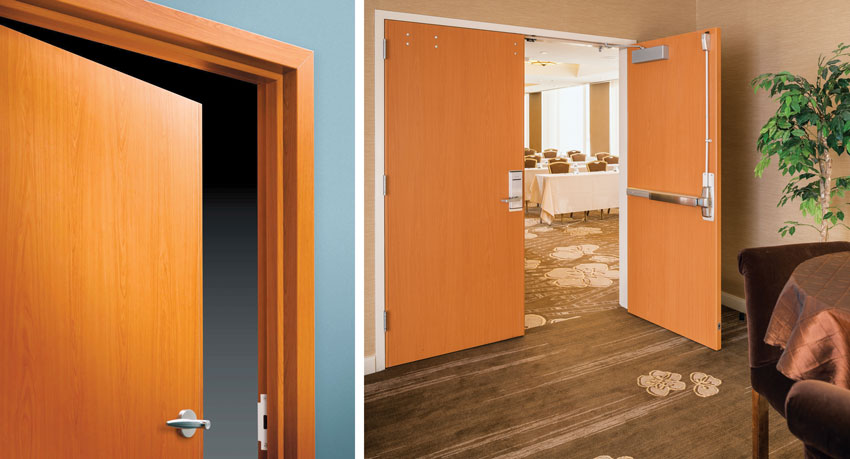
Images courtesy of Construction Specialties/Dean J. Birinyi, ASMP
Interior doors and frames can be selected as part of an overall interior design scheme for aesthetic appeal and for durability to hold up over time with heavy usage as shown here in Hotel Nikko, located in the heart of San Francisco’s Union Square.
Specialty Shower Design
While many interior innovations can take place in the larger components of a design, they can also be found in specific specialty areas of a building too. One of the areas that necessarily receives a lot of design attention is bathrooms and specifically shower areas. Many creative designers are working shower spaces into a larger overall design scheme not only in residential or hospitality locations but also in workplace environments for people who ride bicycles to work or otherwise engage in physical activity. The proclivity toward high design and the need for functionality, durability, and accessibility has created a trend toward wall and floor surfaces to visually flow between shower stalls and the surrounding room, often through the use of ceramic tile or similar materials. Of course, shower floors need to allow the proper flow of water too, so combining that function with the visual goals is paramount.
The means to provide a successful specialty shower design starts with everything that is underneath the tile. The floor obviously needs to be waterproof and sloped either to the center, one side, or in a custom configuration to direct water to a drain. That drain can be shaped, sized, and covered in a variety of ways that impact the appearance as well as the function, such as a square, round, linear, or custom shape. The waterproofing needs to be consistent around the drain as well as along the edges where the floor and the wall meet. All of these things need to be properly worked out, detailed, and installed before the tile is installed to create the finished appearance.
Some manufacturers have created specialty systems for shower floors that address all of the needed functional requirements, thus allowing designers to take advantage of this expertise by specifying a fully coordinated and functional system. Some have paired with specialty drain companies to provide a full range of drain types and looks, including some that are very sleek, contemporary, and easy to blend into a larger design scheme. This single-source capability means designers, contractors, and owners don’t need to worry about proper integration of different manufactured products and systems, or about who is responsible for the waterproofing if an issue does arise. It also relieves designers and contractors from coordinating and sourcing all of the components so they can focus on other things.
The actual drain is usually the part that is visible due to the use of a metal covering over the top that is flush with the surrounding floor finish. This can be an understated item or a visual feature depending on the design needs of the shower area. The drain cover can be selected in a variety of metal finishes and colors but also in a number of patterns of perforations. Some can provide very demure linear patterns, while others can be more geometric with different design vocabularies. If the drain is appropriately placed in the floor of the shower, it becomes very easy to provide an accessible shower stall or room that will allow a wheelchair to be rolled in without being impeded by a raised element.
In addition to providing the actual drain component, such a coordinated system includes a pitched floor substrate (i.e., rigid foam or other material), an approved tile backerboard, and waterproofing membranes, all of which is typically lightweight, waterproof, and vapor retardant for wet areas. The linear drain channel typically has a waterproofing membrane preapplied to the flange in the factory and is internally sloped. It can also be provided with a drain support to allow the plumber to easily level the linear drain despite its pitched channel. Such a drain and support system allows a plumber to set the drain, level it, and have the next tradesmen seamlessly pick up on the next phase of installation. A pre-pitched shower floor system is also typically pre-waterproofed in the factory, which requires the installer to only waterproof the seams where the walls meet the floors. This can reduce the overall installation time by one or two days, thus saving on labor and installation costs. The use of carefully selected wall boards, floors, and waterproofing membrane in the system allows for tile to be installed directly on the surface, without the use of an additional mortar bed. Because such a coordinated system is predictable and minimizes risk of leakage, it is available with a limited warranty of up to 10 years. That can provide peace of mind not only to the designers and contractors but also to the building owners or tenants.
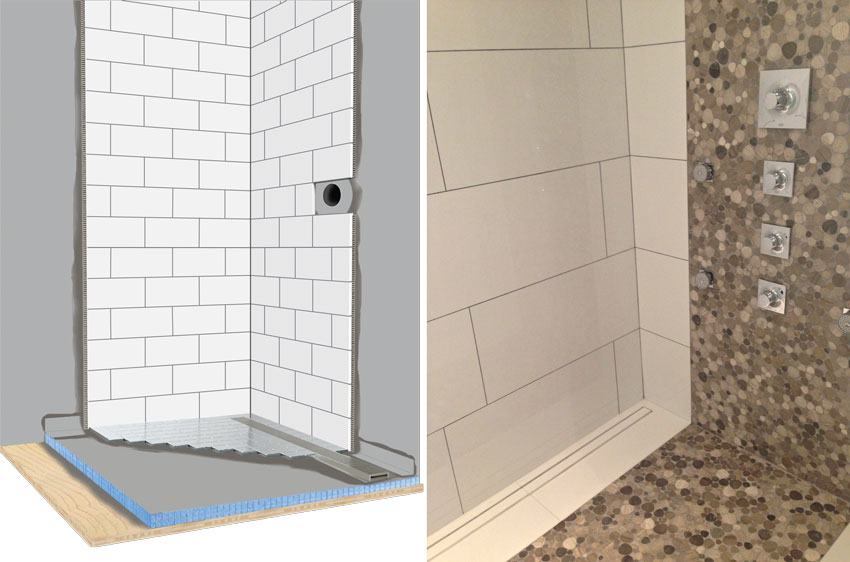
Images courtesy of Infinity Drain Ltd.
The design of shower areas in residential or commercial settings is streamlined by the use of complete shower systems that include waterproofed pitched floor substrates and tile backerboard as well as the decorative shower drain. The shower can be finished with tile or other materials, and the drain cover can be incorporated into the design as seen in the linear drain near the wall shown here.
Specialty Hardware
With everything else in place in a successful interior design, the final step is the finishing touches and details. This applies in particular to architectural hardware not only used on walls or doors but specifically integrated into furniture and fixtures in a space. This can be true for some conventional things like drawer pulls, cabinet handles, and wall hooks that are used throughout many building types. Some specialty hardware companies provide these conventional items but also some very innovative products that offer convenience and operability. In particular, selected hardware that addresses wire management and power supply for portable consumer electronics, such as cell phones and other devices, can not only make a space more user friendly and functional, but it also has the ability to integrate this functionality into an overall design scheme.
Successfully selecting architectural hardware from a wide range of choices usually involves finding the balance between form and function. Manufacturers focus on providing solutions for a specific need while being sensitive to overall design aesthetics and the ability to complement furniture pieces. They also recognize that hardware is not limited literally to nuts and bolts. Rather, architectural hardware is created through intensive, solution-based industrial design. They have applied that expertise directly to current design issues in furniture and fixtures, such as ergonomics.
Among the things that architectural hardware has been used for, the biggest impact on the world of design has come through effective wire management and power supply. With the growing plethora of handheld devices, laptops, computers, small appliances, and other things that need power or data connections, the need to run wires from these devices to outlets has similarly grown. The trend has been not to rely on wall outlets alone but rather to incorporate such outlets within a manufactured piece of hardware that can be installed in furniture or fixtures and then powered back to a wall. This simple concept has evolved over the years, with these types of power and communication systems revolutionizing convenient power access in all areas of design. For example, there are power grommets and other products available that can be recessed, hideaway, flip up, edge mount, and many other styles that mount directly into any type of furniture. These units provide power at the surface level where it is needed, preventing people from having to crawl under a desk or other furniture to find an outlet. This approach has provided practical power and data solutions for things like conference tables, work desks, library study carrels, and even community charging stations in public or commercial buildings. It has also helped with other facets of daily life, such as kitchen islands and bedroom furniture in residential and hospitality settings. The ability to create sleek hardware designs that fit into any furniture and add value has been part of the reason for the growth of this type of architectural hardware.
Architectural hardware provides simple solutions to common design challenges to provide meaningful functionality. Products are available that are suitable for office, residential, hospitality, retail, education, and health-care buildings. A variety of designs are available to blend with furniture in a full range of quality and finishes. Retrofitting older furniture with new hardware is also a fast and easy way to update both the functionality and look of that furniture. Manufacturers typically take pride in what they offer. As Tyra Cunningham, customer service manager of Doug Mockett and Company, puts it, “We strive for simplicity in design and a spareness in execution. We are proud to offer innovative furniture components, but above all else, we pride ourselves on our customer service.”

Images courtesy of Doug Mockett & Company
Specialty architectural hardware can be used in interior designs for conventional reasons like drawer pulls or for a full range of innovative ways to manage wire and power for consumer electronics, appliances, or computers.
Conclusion
Interior design is always ripe for innovation. As the variety of topics covered in this course demonstrate, that innovation can come from many different sources and apply to many different parts of a design, both large and small. Architects and designers who stay aware of the many different products and options available can use them in creative ways to enhance their own designs and propel their careers.
Peter J. Arsenault, FAIA, NCARB, LEED AP, is a practicing architect, green building consultant, continuing education presenter, and prolific author engaged nationwide in advancing building performance through better design. www.linkedin.com/in/pjaarch










